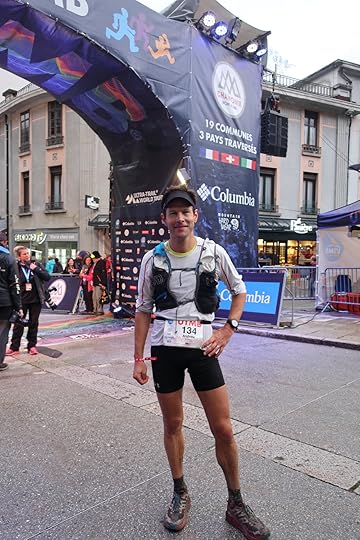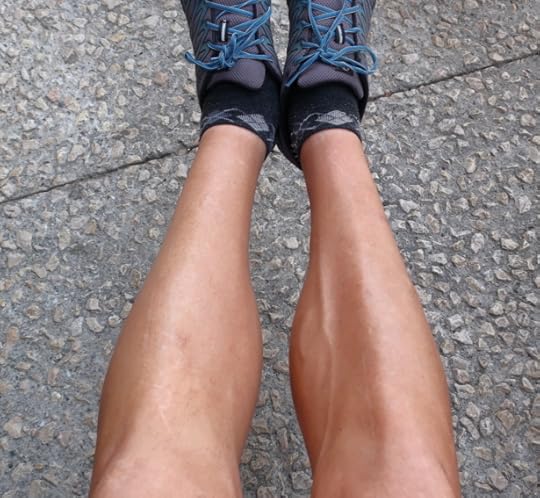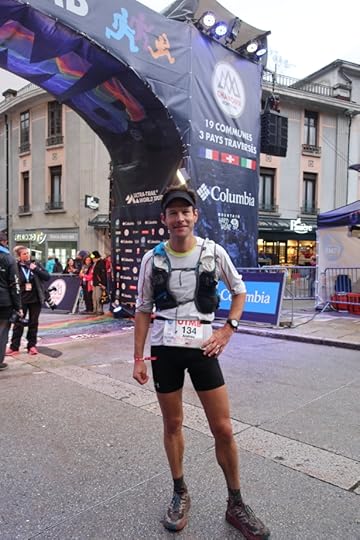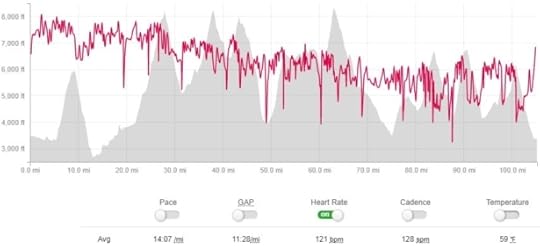Mixed bag: UTMB performance assessment || Perils of racing conservatively

Just twelve hours after finishing UTMB in Chamonix, Amanda and I split for the second half of our vacation, in Provence, hence the delay in post-UTMB coverage. For my sake, I hope to post it all this week before my guided trips start on Sunday and my recollection fades.
I placed 34th at UTMB, with a finishing time of 24:44:07. That’s respectable, given that it was the most talented field in the history of ultrarunning, and that the 104-mile course had 31,000 vertical feet of climbing.
But relative to my potential, my performance feels so-so. And it certainly fell short of my expectations. On an exceptional day, I thought top-10 was possible, and top-20 seemed likely if I ran strong. (In hindsight, top-15 and top-25 would have been more appropriate, since there were ahistorically few DNF’s.)
For 1.5 years I’d invested an extraordinary amount of time, energy, and expense into preparing for UTMB, so I’m a bit disappointed that my performance wasn’t magical. On my flight back across the Atlantic I’d hoped to feel as I did after Leadville in 2008, Run Rabbit in 2015, or Boston in April.
Being too hard on myself
There are some reasons to be pleased:
1. It felt near max
At the finish there was unused gas in the tank, but not much, and it could have been depleted if there’d been more runners within striking distance at the end. (Instead, when I left the final aid station, Vallorcine with 11 miles to go, the next vulnerable runner was 28 minutes up.)
2. Seed vs finish
I was bib #134, but finished 34th, meaning that I outperformed my seed by a net 100 spots. A few DNS’s and DNF’s helped my cause, but relative to the field I raced better than past performances suggested I would.
3. Patience, patience, patience
At the first timing checkpoint, Le Delevret (Mi 8.5), I was in 128th place. Over the next 96 miles I steadily gained 94 net spots. One-hundred mile races reward patience.

A steady improvement in my placement throughout the race
4. Not chicked
Versus the world’s best female ultra runners, I’m usually a little bit faster. The first two females, Nuria Picas and Andrea Huser, finished about an hour later.
5. Better than it looks
The low number of DNF’s among the elite men made cracking the top 10 or top 20 unusually difficult. And while was the course was shortened slightly, times were slowed by mud, limited visibility, and frequent layering transitions due to intermittent precip.
But, it wasn’t magical
Why am I not thrilled with my performance?
1. Spanked by the elites.
The winner, Francois D’Haene, finished in 19:01, an embarrassing difference of 5:43, or 3.5 minutes per mile. That gap is insurmountable even if I was a full-time professional runner, knew the course intimately, and was on a world-class PED program. It’s humbling to witness the inferiority of my God-given talent.
2. Never mixed it up with the elites.
Besides Sage Canady and Jason Schlarb, who had off days, I didn’t beat or even temporarily match strides with any of the US elites. You can’t become one if you don’t run with them.
3. Low average HR.
My average HR was 121 bpm, which is significantly lower than my last best 100-mile effort, Run Rabbit (127 bpm), and surprisingly lower than Bighorn 100 (123 bpm), which was sub-max. Quantifiably, this indicates that I ran below my physical capacity.
4. Poor ITRA score.
The Performance Index establishes apples-to-apples comparisons across races and between runners. My 24:44 was given a score of 727, which is one of my lowest scores ever, even lower than decidedly disappointing performances like Bighorn, Silverheels, or Golden Gate.
What happened?
If UTMB hadn’t been my apex race or if my calendar had an obvious next endeavor, I’d more quickly and more easily get over it and move on. But that wasn’t the case, so let me dwell.
1. Training
My fitness does not explain a so-so performance. I was in the best ultra fitness of my life, as evidenced by my workouts: this summer I set a new FKT on Pawnee-Buchanan and new PR’s at will on oft-run segments. Under David Roach’s guidance, I was peaking at just the right time.
2. Minor strains
Part of my struggle was physical handicapping. I strained my left calf on the ascent of Col du Bonhumme (Mi 25), which left me with restricted range of motion and fearful of it blowing up completely. My psoas muscles (i.e. hip flexors) were also tight for about half the race, further hindering my stride.

Four full days after the race, my right leg was back to normal, but my left calf was still noticeably swollen.
3. Race strategy
But I think the real flaw was my conservative race strategy. My race was textbook cute: I started slow, caught many runners who went out too fast, and looked strong at the finish.
But it lacked the deep suffering that’s necessary for a career performance. If I’d gone out faster, I most certainly would have been worse for wear in the final half or quarter. But I think I would have been carried to a better time: I’d have utilized the faster momentum of the elite field, and would have been more psyched that I was in the mix. Instead, I mostly floated in No Man’s Land, passed quickly those who had fallen off the back, and wondered what was happening at the front.
UTMB 2018?
Do I have unfinished business at UTMB? Yes. But I need to ponder my broader one- and two-year goals before committing to that. About two years ago I decided to utilize the remaining years of my physical prime by investing myself fully in endurance running. I’ve done that, and now must decide whether I should double-down or whether I should find another place to play.
The post Mixed bag: UTMB performance assessment || Perils of racing conservatively appeared first on Andrew Skurka.





